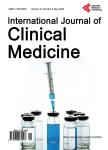Outcome of In-Hospital Cardiac Arrest in Adult General Wards
Outcome of In-Hospital Cardiac Arrest in Adult General Wards作者机构:Department of Emergency Medicine Kaohsiung Chang Gung Memorial Hospital Kaohsiung Taiwan Chang Gung University College of Medicine Kaohsiung Taiwan Department of Infection Kaohsiung Chang Gung Memorial Hospital Kaohsiung Taiwan Department of Community Medicine Kaohsiung Medical University Hospital Kaohsiung City Taiwan Department of Public Health College of Health Sciences Kaohsiung Medical University Kaohsiung City Taiwan
出 版 物:《International Journal of Clinical Medicine》 (临床医学国际期刊(英文))
年 卷 期:2014年第5卷第19期
页 面:1228-1237页
学科分类:1002[医学-临床医学] 100201[医学-内科学(含:心血管病、血液病、呼吸系病、消化系病、内分泌与代谢病、肾病、风湿病、传染病)] 10[医学]
主 题:In-Hospital Cardiac Arrest Charlson Comorbidity Index General Ward Cardiopulmonary Resuscitation Outcome
摘 要:Objective: Few studies have focused on factors influencing outcomes of patients with in-hospital cardiac arrest (IHCA) in general wards. The goal of this study was to report the outcomes of adult patients with IHCA in the general wards and identified the prognostic factors. Methods: Adult patients with IHCA having received cardiopulmonary resuscitation in general wards from January 2008 to December 2011 were retrospectively reviewed from our registry system. The primary outcome was survival to hospital discharge, while the secondary outcome was sustained return of spontaneous circulation (ROSC). Results: A total of 544 general ward patients were analyzed for event variables and resuscitation results. The rate of establishing a ROSC was 40.1% and the rate of survival to discharge was 5.1%. Ventricular tachycardia/ventricular fibrillation (VT/VF) was the initial rhythm in 3.9% of patients. Pre-arrest factors including a high Charlson comorbidity index (CCI) ≥ 9 (OR 0.251, 95% CI 0.098 - 0.646), cardiac comorbidity (OR 0.612, 95% CI 0.401 - 0.933), and arrest time on the midnight shift (OR 0.403, 95% CI 0.252 - 0.642) were independently associated with a low possibility of ROSC. The initial VT/VF presenting rhythms (OR 0.135, 95% CI 0.030 - 0.601) were independently associated with a high survival rate, whereas patients with deteriorated disease course were independently associated with a decreased hospital survival (OR 3.902, 95% CI 1.619 - 9.403). Conclusions: We demonstrated that pre-arrest factors can predict patient outcome after IHCA in general wards, including the association of a CCI ≥ 9 and cardiac comorbidity with poor ROSC, and deteriorated disease course as an independent predictor of a low survival rate.



